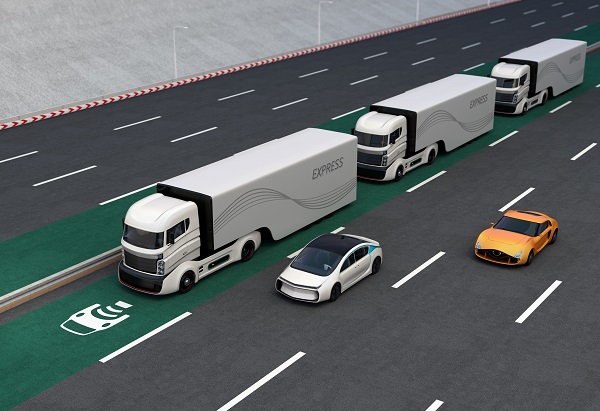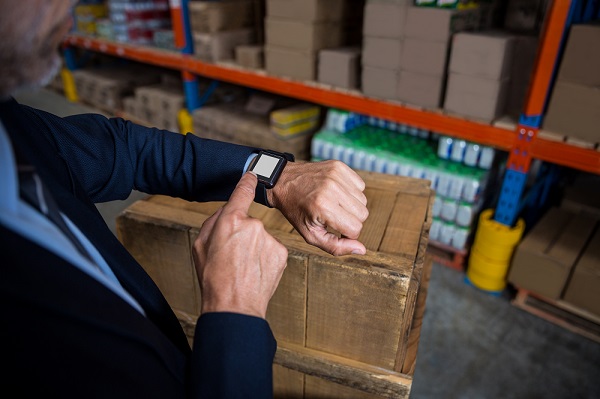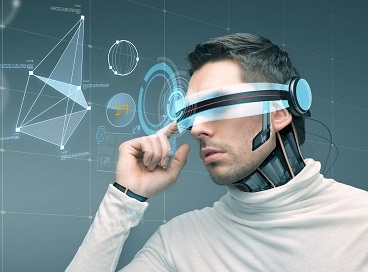White Paper| Logistics and EMM
EMM Shaping the endpoint security and management for Logistics and Transportation Industry
Author: 42Gears Team
INTRODUCTION
Innovations in technology have been embraced by the Logistics Industry to achieve work efficiency and affordability for decades. Rugged mobile devices, RFID, GPS and Barcode scanners have proved to be blessings for the Industry and have contributed a lot towards saving costs, time and process optimization.
Now, growing complexities in logistics and transportation industry, as well as an increase in customer expectations, has created a need to adopt emerging technologies such as IoT (Internet of Things), cloud-based Transport Management System (TMS), unmanned aerial & ground vehicles, and wearables. These innovations might prove to be a boon to this Industry where time and efficiency define profit. Yet, implementing them into real practice need lots of improvement which is crucial for commercial adoption and their integration with EMM is also vital.
EMERGING LOGISTICS TRENDS AND INTEGRATION WITH EMM
Some technological adoptions of EMM in Logistics field are explained below:
1. Internet of Things(IoT): IoT is revolutionizing businesses globally. Though managing and controlling durables like ceiling fans, lights, air-conditioners etc. via mobile devices was ground breaking technology, IoT performs various functions in logistics such as tracking of vehicles, packages and equipment through their in-built sensors. It was predicted by Gartner in 2015 that “enterprises will spend over $40 billion on designing, implementing and operating the Internet of Things”.
Cloud Based GPS and RFID are two important pillars of IoT. These technologies help professionals gather any product related information in seconds. Many challenges such as time & attendance of employees, cyber security, monitoring and controlling of products on day-to-day basis can be easily managed by GPS and RFID. Product quality control can also be managed by IoT through inbuilt sensors for motion detection, humidity, temperature, vibration. RFID also provides safety and security on premise with its location sensors that can easily identify an unauthorized access and send alerts if someone enters restricted area1.
IoT sensors remote configuration, status monitoring and security of data, both at rest and in motion, is very vital for any IoT enterprise deployment. These capabilities are readily available in EMM solutions for standard platforms like Android, iOS, Windows. But sensor devices generally run non-standard, custom operating systems and thus are difficult to manage.
However, in most cases, these sensor devices connect to the internet via a gateway/router. These gateways, running on standard platforms like Linux, Windows, Android, etc. can very well be managed by EMM solutions and in effect provide a way for Logistics companies to secure sensor data. It is also possible to monitor IoT devices’ health and manage their configuration through EMM via these gateways.
2. Affordable SaaS-based TMS Solutions: Earlier TMS (Transportation Management System) application were mostly on premise, expensive and could only be afforded by large companies. Only 35% of large companies were using TMS, as per a published report in 2015.2 TMS companies are now offering cloud-based services, targeting small and medium shippers. As per David Landau, Executive VP at Cloud Logistics, small companies spend $5 million to $10 million annually on freight, which is mainly on manual methods used in transportation. These firms can now start with cloud and later change as per their needs. Cloud-based system eliminates labor and upfront investment that traditional software implementations require.3
The entire TMS system includes conducting bidding, procuring contracts, planning and optimizing the most efficient modes and routes, conducting shipping activities on day-to-day basis, managing financial aspects, reporting and analyzing performance and transportation costs.4
Rugged devices, phones, and tablets, used by employees or mounted on vehicles are managed by EMM solutions. EMM features like location tracking, geo fencing can provide vital inputs to TMS systems. TMS system can integrate with EMM solution via REST APIs to offer an integrated and insightful dashboard to administrators. E.g. admin can be alerted on TMS console if an employee carrying a device steps out of the warehouse. Real-time and historical location for logistic trucks can be viewed on TMS console.
3. Unmanned Vehicles/Robotics: Unmanned Vehicles includes Unmanned Aerial Vehicle and Unmanned Ground vehicles.

Unmanned Aerial Vehicles/Drones:
“Drone economy is exploding”, said Keith Kaplan, Head of the UAV Systems Association. Drones in transportation industry providing shippers many options to deliver products to the end customer. Amazon is the pioneer in using drones for delivery to customers. Many companies like Google and DHL are putting their efforts in launching more drones. According to Radiant Insights, the UAV market for commercial use is expected to grow $1.2 billion by 2020 as compared to $151 million in 2014.5
Inventory Management System (IMS) is also becoming more efficient as drones can scan inventory in lesser time than a worker takes, hence save time and energy. “A drone operator can count as much stock in a warehouse in two days as a team of 80 people with handled scanners” has been pointed out by Drone Scan. For internal delivery management, it has the potential to load and unload goods and sort goods as well. For security purposes, too, it is more viable and superior than stationary cameras.6 Further, less human interactions with machinery and stock minimize workplace accidents and risks.7
Unmanned Ground Vehicles:
Another unmanned vehicles that are set to change the picture of the logistic industry are ground vehicles. Autonomous vehicles can take faster and better decisions than humans. Research proves that up to 90% road accidents are caused by drivers. Self-driving vehicles perform according to weather conditions and traffic on the road, hence they are more diligent and safe. Automated vehicles are more fuel efficient as well and can be programed to minimize environmental impact as well as achieve lower emissions. Approximately 15% motoring costs can be reduced by automated vehicles.8
Automated trucks can be harnessed to each other to cover large distances safely and quickly. They will also be able to communicate with each other in cases of emergencies or accidents. Due to its potential benefits in saving delivery time, many companies such as Google and Apple are planning to launch unmanned trucks for delivery purposes. In 2011, Google announced its plan to develop an autonomous car. Apple is also planning to launch a self-driving car in 2019.9 By 2030, self-driving vehicles could create 3,20,000 jobs in UK and add £51 billion to the country’s economy and prevent 25,000 serious accidents, as stated by Society of Motor Manufacturers and Traders in a report published by KPMG.10

Robotics:
Robotics are another invention that are being embraced by logistics companies. The biggest challenge in logistic industry is finding an efficient workforce in abundance. Robotics by replacing humans can work more efficiently. From sorting, incoming and outgoing packages to placing them into right containers or shelves, robotics can be better than humans. It can reach into tiny areas and lift heavy objects. Companies employing robotics can save millions of dollars. Cost of a robot is $25000, which is considered as a minimum annual salary of a worker. By investing in a robot, a company could save $1 million within 40 years.11 According to analyst Shawn Milne, Amazon could save $400 million to $900 million in a year by putting robots into work. Also, an average cost of sorting, picking and boxing an order is $3.50 to $3.75, which may also reduce 20% to 40%, as per Shawn’s estimation.
After considering the potential benefits of using Robots, many government across countries are providing significant grants for robotics research. US government gave $50 million to a university for robotics research in 2012.12 In 2015, China announced team up with Russia to develop a $200 million robotics research center and startup incubator.13 Not only governments, but many startups are also focusing on Robotics research. In 2015, a startup company in London, UK, called Starship Technologies announced that it will begin building and selling parcel delivery robots.14
Moreover, the Robot suit is also set to enter the market. It is a wearable suit that can enhance the power, strength, and endurance of a person. In 2015, the Japanese company Panasonic announced it will begin selling a robotic exoskeleton called the Assist Suit AWN which will weigh less than 6 kg, cost less than $9,000 and allow a person carry 15 kg for up to 8 hrs.15
One of the common modes of operating Drones/UVs is ground control via a tablet, phone, computer or wearable device. EMM solution becomes essential in making sure these endpoints are secured and managed. Unauthorized access to these phones/tablets can lead to unauthorized access to drone/ground vehicles and robotic control systems. EMM solutions enable administrator to secure these devices behind strong password policies and lock/wipe them in case they are lost/stolen.
4. Wearables: Wearable technologies are being embraced by the logistic industry for enhancing productivity, improving communication and operational efficiency. According to wareable.com, a news site focused on the benefits of wearable technology, the total number of global wearable shipments for 2014 was over 50 million.16 A brief description of some of the wearables used in logistics industry are given below:

Smart Watches:
Smartwatches have been mostly used for fitness purposes. These watches usually integrated with smartphones and allow users to access text messages, e-mails and phone calls without using phones. Due to its functionality potential, the technology is now being embraced by logistic firms too. Managers can receive emails, voice mails, text messages and respond immediately. They can get a real-time picture of what is happening in the warehouse and outside the premise. Smartwatches can also provide important information to shippers like quantity of shipments, time of shipment and estimated time of delivery completion. 17
Smart Glasses:
Another Wearable which are widely adopted in transportation and logistics industry are Smartglasses. According to Juniper Research, shipment of smart glasses is likely to increase to 10 million annually by 2018 as compared to 87,000 shipped in 2014. Gartner estimates that smart glasses are mostly used in field services due to their efficiency and productivity, predicting an increase in profit levels up to $ 1bn annually.18 Smartglasses offer infinite applications for mobile and field-based workers to enable cost saving practices. Smartglasses helps to identify what is to be picked, which shelf the product is located on and where on the truck it is to be placed, also, a prism in the glass displays all the necessary information such as the product’s part number and shelf location on the screen of the glasses.19

Wearable devices are designed for consumers, are capable of various applications. They need to be lock downed for logistic enterprise apps for better productivity. Data on these devices also need to be secured. Most Wearable platforms like Android wears, Hololens & iWatches are derived from standard platforms like Android, iOS and Windows. It is thus possible to lockdown, secure and manages these wearable devices using an EMM solution.
CONCLUSION
Technological advancements are the driving force for adopting new trends in the logistics and transportation industry. Few organizations are embracing these advancements; many are yet to adopt. These technologies have potential benefits like improving workforce efficiency, growth in acquiring new customers, increasing profits, reducing costs, improving communications and connectivity, reducing dependency on labors, offering faster and better results and much more. EMM integrated with IoT and Cloud TMS, UAVs, Robotics and wearables empower managers’ great flexibility and control in supply chain. Enterprise Mobility Management solution like 42Gears’ SureMDM can be very well integrated with all the above-mentioned systems.
REFERENCES
-
- http://mhlnews.com/
- http://cerasis.com/
- http://www.inboundlogistics.com/.
- http://www.inboundlogistics.com/
- https://www.investcalgaryregion.ca/
- http://www.clearspider.com/
- http://www.dhl.com/
- http://cerasis.com/
- http://www.supplychaindigital.com/
- http://cerasis.com/
- http://www.nsf.gov/
- http://www.prnewswire.com/
- https://www.starship.xyz/
- http://www.ibtimes.co.uk/
- http://www.rfgen.com/
- http://www.supplychain247.com/
- http://www.eft.com/